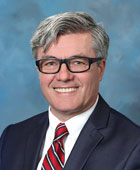Gazing Into the Shattered Mirror: Gun Violence in America
The chilling echoes of gunfire, the piercing screams of terror, the faces etched with disbelief: These are the grim signatures of America’s ongoing tragedy—the mass shooting epidemic. A plague that tears through schools, supermarkets, places of worship, leaving behind shattered lives and communities in fragments. It’s a story tragically familiar, demanding we answer the unanswerable: why?
Defining “mass shooting” itself is a contentious issue, but under the Gun Violence Archive’s definition (four or more people shot and/or killed, excluding the shooter), the statistics paint a horrifying picture. Tracing the roots of this crisis leads us back to the 1960s when mass shootings were isolated outliers. Over time, their frequency and lethality escalated, with incidents like Columbine, Sandy Hook, and Parkland becoming grim landmarks edged in our collective memory. According to the Gun Violence Archive, in 2023 alone, over 656 mass shootings claimed hundreds of lives and injured thousands more. Each year, the numbers creep higher, casting a long shadow over the American Dream.
What fuels this seemingly endless cycle of violence? While the immediate catalyst may differ, a complex tapestry of underlying factors weaves a web of despair. Facile generalizations are noninformative and potentially harmful. Solutions should be based on facts, not opinions. Data show that the often-cited mental health contributors require a nuanced understanding. Easy access to firearms, a culture of violence glorification, and societal fissures fueled by political polarization and economic inequality are all potent pieces of the puzzle. Each factor alone is concerning, but their confluence creates a volatile mix.
Predicting the future feels like gazing into a shattered mirror. A 2021 study in the Journal of Quantitative Criminology using data from 156 mass public shootings between 1976 and 2018 forecasted the future probability of attacks reaching various severity levels. The results are chilling: The probability of an event as deadly as the 2017 Las Vegas massacre occurring before 2040 is 35%. While projections vary with the modeling parameters, the trend points toward a grim escalation, demanding immediate action. Solutions require a multifaceted approach. Enacting stricter gun control measures, prioritizing mental health support and crisis intervention, addressing social inequities, and fostering a culture of nonviolence are only some starting points. Actionable recommendations include the following:
Strengthening gun legislation. This includes improved background checks; permits to purchase; safe storage laws; assault weapon bans; and Extreme Risk Protection orders, allowing temporary firearm removal from individuals deemed a threat.
Expanding mental health access. This means supporting community bonding programs, increasing access to crisis intervention services, and dismantling the stigma surrounding mental health support.
Addressing social inequities. Criminal justice reform, responsible policing, educational investments, and economic opportunities for disadvantaged groups can foster trust and social cohesion.
We must engage in honest conversations, break the grip of partisan gridlock, and prioritize lives over rhetoric. Every voice raised and every action taken chip away at the edifice of inaction. Contact your elected officials, support organizations working on gun violence prevention, and break the silence in your communities.
The blood of innocents stains our collective hands. We must act for the souls lost and for the lives yet to be saved. Let us turn grief into action, despair into determination. Conversation by conversation, vote by vote, together we can rewrite this tragic narrative and ensure that the echoes of gunfire are replaced by the chorus of a nation awakened to its responsibility.
The choice is ours. Will we be a nation haunted by the ghosts of mass shootings or will we forge a future where life, not fear, prevails? Let the answer ring out loud and clear: We choose life. Now, let’s fight for it. ■




